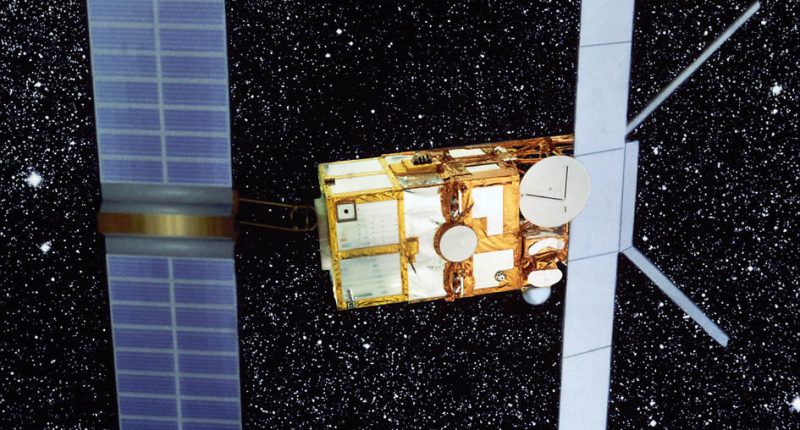A MASSIVE European satellite is set to come hurtling towards Earth later this month, which hawk-eyed experts will monitor closely.
The now-retired space gear, which launched into orbit in April 1995, is the European Space Agency’s (ESA) Remote Sensing 2 satellite (ERS-2).
ERS-2’s Earth-observing duties were halted in 2011, when the ESA emptied its fuel tank to lower its altitude and save the hardware from collision with other, operational, satellites.
According to the ESA, ERS-2 “was the most sophisticated Earth-observation spacecraft ever developed and launched by Europe.”
It was equipped with cutting-edge radar tools that “proved invaluable” when it came to monitoring natural disasters, Dr Minjae Kim, astrophysicist at Warwick University, told The Sun.
At the time of liftoff, it weighed 5,547 pounds (2,516kg).
READ MORE ON SPACE
Now, without the fuel, it pushes the scales to roughly 5,057 pounds (2,294kg) – that’s slightly heavier than a male Rhinoceros or a Tesla Model X.
Thousands of extraterrestrial objects – such as meteorites or failed moon landers – descend upon Earth each year.
Although these meteorites typically range in weight from 50g to 10kg.
Dr Kim added: “While most of them arrive as dust or tiny particles, which are invisible to us, space rocks measuring about 10meters (roughly 33 feet) wide – comparable in size to the ERS-2 satellite at 11.8m tall – are expected to enter Earth’s atmosphere every six to 10 years.
Most read in Tech
“On an even rarer scale, objects large enough to pose a threat to civilization only occur once every few million years.”
ERS-2 will most likely meet a fiery death, burning up in Earth’s atmosphere upon reentry.
It’s expected there will be no debris left for any on-Earth collisions or damage.
If there is debris, the chances of it landed in the ocean are high, as water covers about 70 per cent of Earth.
“Regarding the ERS-2 satellite, it’s unlikely to pose a threat upon re-entry, especially since it was specifically configured to reduce the possibility of fragmentation,” Dr Kim continued.
“As it descends through Earth’s lower atmospheric layers, it’s expected to burn up entirely, although the trajectory of this uncontrolled re-entry cannot be precisely predicted.”
There is always some degree of risk when it comes to space objects shooting towards Earth.
Although ESA officials say the annual risk of an individual human being injured by space debris is under 1 in 100billion – roughly 65,000 times lower than the risk of being hit by lightning.
It’s unclear the exact date ERS-2 will make its reentry.
Explained: ‘A degree of risk’

Dr Kim says the so-called Chelyabinsk Event in 2013 serves as a “stark reminder
“An asteroid about 20 meters in diameter entered Earth’s atmosphere above Chelyabinsk, Russia,” Dr Kim explained, “exploding while still in the air, releasing energy equivalent to 500kilotons of TNT.”
He added: “Fortunately, it detonated about 30km above the ground, sparing direct impact damage.
“However, it generated a shockwave that injured 1,500 people and damaged 7,200 buildings across six cities.
“Most injuries resulted from the shockwave’s slower-speed effects, such as shattered windows causing harm with flying glass.
“Fortunately, it’s generally known that space rocks smaller than about 25m (or 82ft) usually disintegrate upon entry into Earth’s atmosphere, causing minimal to no damage.”
Find out more about science
Want to know more about the weird and wonderful world of science? From the Moon to the human body, we have you covered…












